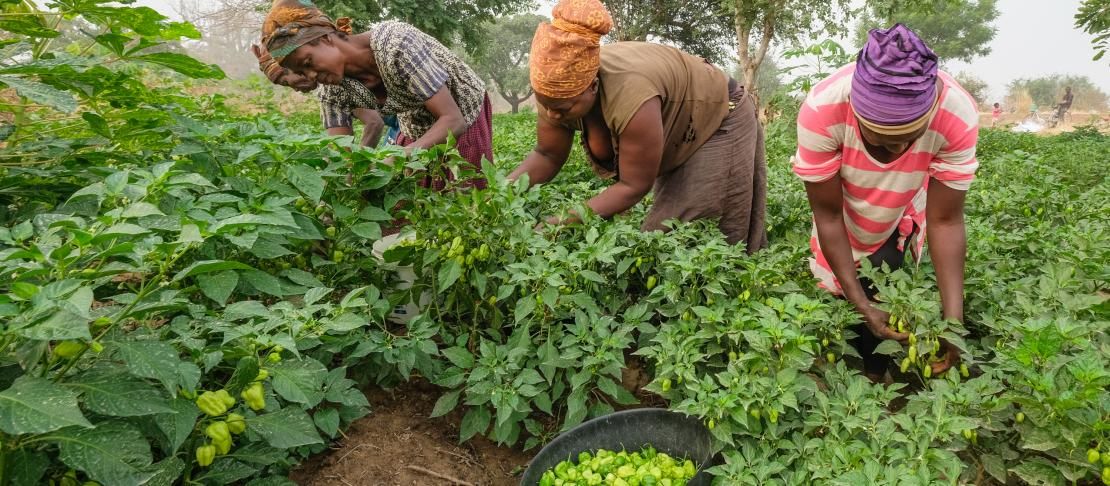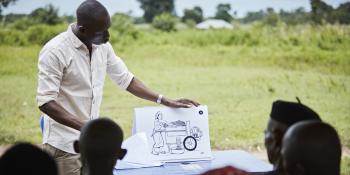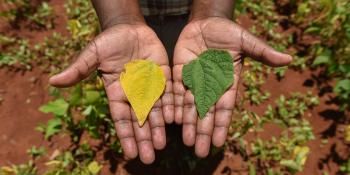Why Ghana’s climate-smart agriculture profile is focused on gender

In West African rural areas there are significant gender inequalities in terms of access to opportunities and resources. This in turn inevitably results in greater gender-based vulnerability and coping difficulties.
This is why agricultural research in Ghana is focusing some of its programs on trying to understand how deep the gender gap in climate-smart agriculture (CSA) practice really is.
The CGIAR research program on Climate Change Agriculture and Food Security (CCAFS) has developed an initial profile for climate-smart agriculture uptake in Ghana with regard to gender. The study provides an overview of gender-sensitive CSA practices, their level of adoption and role they play in gender empowerment in the country.
Gender Profile of Climate-Smart Agriculture in Ghana
This aims to inform decisions about integrating gender-responsive actions into agriculture and CSA development plans at various scales. It provides a baseline that can be used as a springboard for establishing vulnerability indexes based on agroecological zones in Ghana. It also can be used to inform policy decisions related to CSA investments.
Reducing the agricultural sector gender gap will increase yields and reduce hunger
Agriculture is one of the key factors in Ghana’s economic growth and development process. A 2019 study by the International Labour Organization (ILO) says that 33.5% of Ghana’s labour force is engaged in the rural sector.
But agricultural work has a pronounced gender gap in favour of men. The population of Ghana is 49% female, of whom only 22.8% are engaged in the rural sector. Although the economic status of Ghanaian women working in the rural sector is better than it is in other West African countries, it remains still quite unattractive by global standards.
Recent studies have also shown that female-headed households in semi-arid Ghana are more vulnerable compared to male-headed ones when it comes to adaptive capacities.
In 2019, the World Bank stated that a large part of Ghana’s rural female population had limited access to productive resources such as land, livestock and necessary agricultural services. It said that women tend to operate smaller farms, are less likely to own property or livestock, have less access to credit, and tend not to benefit from training or extension services.
At the same time, a report by UNDP estimates that if women farmers had the same access to productive resources as men, this would likely increase yields by up to 30%. This could raise total national agricultural output by 4%, and result in a 17% reduction of hunger.
Source: Gender Profile of Climate-Smart Agriculture in Ghana report 2021
Five Takeaways from the Gender CSA Profile
The gender CSA profile gives an overview of agriculture and climate change in Ghana, with special attention gender aspects related to land ownership or rights, crop and livestock productions, forestry, value chains, food security and climate change. Here are five takeaways from it.
- Women have limited access to land
Source: Gender Profile of Climate-Smart Agriculture in Ghana report 2021
Ghana is in many ways a patriarchal society, where women are excluded from important investment decisions. Only 30% of women own land, and the land that women do own is significantly less valuable (around 3 times less valuable). In most situations, a married woman can only access land through her husband. Access to ownership and control of lands therefore constitutes one of the most important constraints facing women farmers in Ghana.
- Crop production is highly gendered
In Ghana, most crop farmers are women, but the majority of their output is destined for household consumption. As a result, women’s agricultural production is able to meet the food needs of their families, but it does not generate much income for them.
This is partly because crop production is gendered. For instance, women tend to primarily produce cereals such as maize, rise, millet and sorghum and vegetables.
- Women’s involvement in livestock production remains limited
Ghana’s livestock sector has the potential to transform the livelihoods of men, women and youth. But where men are involved in large-scale sheep and goat production, women tend to be engaged in the production of poultry, pigs and small ruminants.
The Ministry of Agriculture has tried to increase women’s and young people’s participation in livestock production, particularly in guinea fowl production and small ruminants, by means of a training series aimed at those groups. Unfortunately, women's involvement in this series has been limited due to a lack of finances. This highlights women's poor access to productive resources, and constitutes a significant barrier for women in many development interventions.
- Women operate as aggregators in Ghana’s value chain
Ghanaian women dominate Ghana’s small-scale agricultural basic production, except when the product has a higher value-added, or is traditionally ‘male-cultivated” crop.
Women primarily operate as aggregators in the agricultural value chain. This means they buy food from producers and resell them in bulk to mostly male wholesalers. While aggregators are a vital part of Ghana’s relatively small-scale agricultural sector, it tends not to be very profitable work – aside from one or two notable exceptions in the form of “market queens” who control all transactions pertaining to a particular commodity in a market (WFP, 2017).
Because they operate on a small-scale, and often lack capital and storage facilities, most aggregators are not able to purchase large quantities of products, get good prices for storage, or store products that are not sold, thereby decreasing their capacity for generating higher profit margins.
- Women are highly climate-vulnerable
Climate change affects men and women differently. Women and women-led households are more vulnerable to climatic events and have less ability to respond to the effects of climate change on their livelihood. This is partly because women face numerous obstacles to accessing productive inputs, assets and services. This not only heightens their vulnerability to food insecurity, but also considerably reduces their contribution to overall agricultural production.
Responding and adapting to climatic stresses is more difficult for women due to their lack of access to land, financial services, social capital and technology. Thus, vulnerability to climate change is worsened by gender disparity.
How the gender CSA Profile can help
As we have seen, the Gender profile for climate-smart agriculture uptake in Ghana identifies gender-related challenges for the agricultural sector in the country.
This profile can be used to establish vulnerability indexes for each agroecological zone in Ghana. These in turn are vital for informing policy decisions, and increasing support for CSA investments in Ghana.





